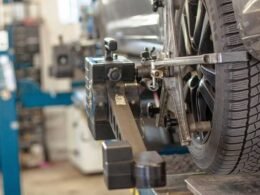Top fuel injectors allow the engine to reach its full performance by offering maximum power, fuel efficiency, and minimising emissions. Advanced fuel injectors use state-of-the-art technology to ensure the correct quantity of fuel is delivered with the perfect air-fuel mixture for minimal carbon and greenhouse gas emissions. Routine maintenance and fuel injector refurbishment can be one of the many ways to extend injector life and ensure that it maintains a decent percentage of efficiency. Re-manufactured fuel injectors continue to provide the accuracy required for fuel waste minimisation and lower pollution levels.
Mechanical fuel injection works without electronics and is physically timed to the engine, usually using one of the engine’s camshafts The right injectors also allow drivers to receive better performance while contributing toward a cleaner environment. In this article, we’ll discuss certain aspects related to fuel injectors including types, components, how the fuel injectors work and their maintenance.
Types of Fuel Injection Systems
Fuel injection systems can be distinguished based on application, design, and functionality due to the various differentials in engines’ requirements and performance objectives. The main types include TBI-throttle body injection, MPFI-multi-point fuel injection, SFI-sequential fuel injection, and DFI-direct fuel injection.
TBI systems use one injector for the entire engine, while MPFI systems use different injectors for each cylinder, which permits a more precise distribution of fuel. An SFI- an advanced type of MPFI injects the fuel in a sequence that follows the firing sequence of the cylinders, thus offering even better efficiency. However, DFI injects fuel directly into the combustion chamber. This results in maximum power development with increased fuel efficiency and reduced emissions.
Components of fuel injectors
The fuel injection system components work together to achieve proper delivery of fuel to the system. The fuel pump transfers the fuel from the tank into the injector at high pressure. The fuel injector atomises fuel into either the intake manifold or the combustion chamber. The pressure regulator regulates fuel pressure at a constant level, and the sensors measure diverse variables related to air intake throttle position and engine temperature. This ECU, then is the brain of the whole system that processes the data received from such sensors to govern the timing and duration of injectors. The ECU is crucial in attaining an optimal fuel-air mixture by ensuring very accurate control of the fuel sup.
How the Fuel Injection Process Works
Fuel injection is a very specialised process that is highly dependent upon the mechanical and electronic components to deliver fuel efficiently. The fuel pump first transfers the fuel from the tank to the injector. Different sensors-oxygen, temperature, and airflow-provide input to the ECU, which in turn works out the quantity of fuel required with utmost precision.
It then estimates and signals to the injectors, opening them at discrete intervals, allowing fuel to spray into either the air intake manifold or combustion chamber. The result of this is the fine mist that mixes with the incoming air, ensuring complete combustion for the maximisation of power output while minimising emissions.
Advantages of Fuel Injection Over Carburetion
Fuel injection has several advantages over the more traditional carburetion systems. Key advantages that fuel injection operates on include improved fuel economy. Fuel injection works by delivering fuel in the exact amounts required for the demands of the engine, which prevents fuel from being wasted, unlike carburettors, which often flood the engine with too much fuel.
This precise fueling also increases responsiveness and acceleration of the engine, making driving easier to control and smoother. Fuel injection systems also contribute to reduced emissions due to the promotion of more efficient combustion, which is a feature very helpful in today’s stringent emission standards. This serves to provide improved power delivery and lower the environmental impact of a vehicle.
Fuel Injector Maintenance and Refurbishment
Maintenance of fuel injectors is essential for the proper functioning and efficiency of an engine. These fuel injectors can be affected with time since the continuous flow of fuel contains impurities that might block or damage them, leading to reduced efficiency and suboptimal performance of the engine, increased emissions, and lower fuel economy. Regular Fuel Injector Refurbishing cleans or replaces worn parts to restore new-like conditions in fuel injectors.
Ultrasonic cleaning removes any deposits, while stringent testing makes sure proper spray patterns and correct flow rates are achieved. Refurbishing your fuel injectors will go a long way in maintaining fuel efficiency, improving power output, and reducing pollution, which in turn enables the engine to perform per design.
Conclusion
After going through the above article, these combined sections detail the functioning of the fuel injection system, types and components, advantages over carburetion, and maintenance. Each one of these aspects plays an important role in bringing the fuel injection system to modern engines, making it significant for achieving efficient, powerful and more eco-friendly vehicle performances.










